Lecture 16
Binary Search Trees
Intro & recursive search
MCS 275 Spring 2024
Emily Dumas
Lecture 16: Binary search trees
Reminders and announcements:
- Project 1 solutions posted
- Project 2 available
- Project 2 autograder will be open on Monday
Project 2
Involves solutions to a maze with obstacles (a labyrinth)
Passing obstacles requires equipment, player has mutable inventory
You write several functions that answer questions (solution exists? need this item? etc.)
I provide specs, labyrinth data structure, and sample labyrinths.
Back to dendritic matters...
Sample code
Tree-related examples are in the new directory datastructures in the course sample code repository.
Goals
Learn about search and insert operations on binary search trees.
Implement in Python.
Explore application to a fast data structure for storing a set of integers.
Binary search tree
A binary search tree (BST) is a binary tree with keys that can be compared, such that for each node:
- Left subtree contains only smaller keys
- Right subtree contains only greater keys
We'll require keys to be distinct. Equal keys can be handled in multiple ways.
Binary tree
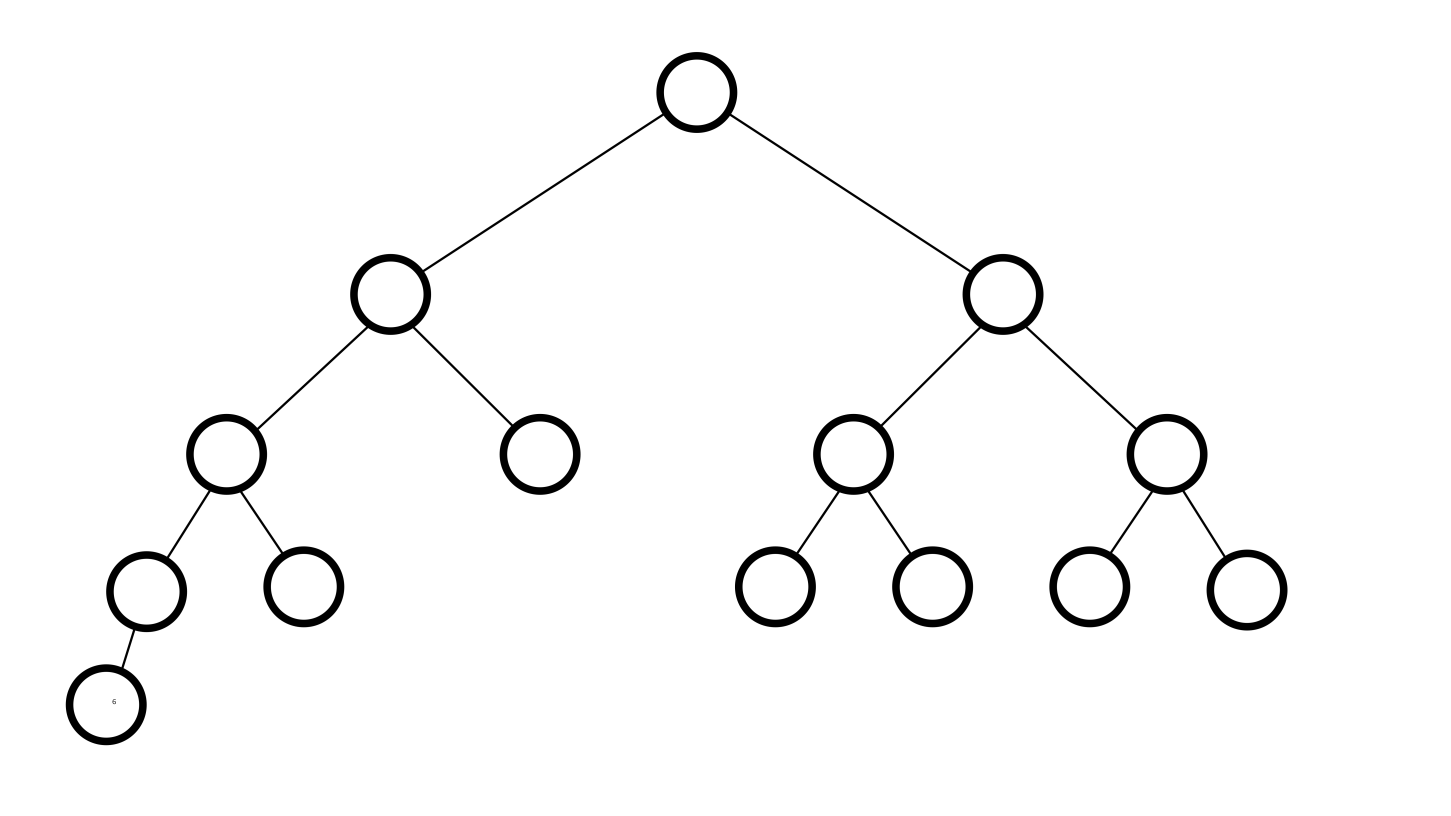
Binary tree with keys
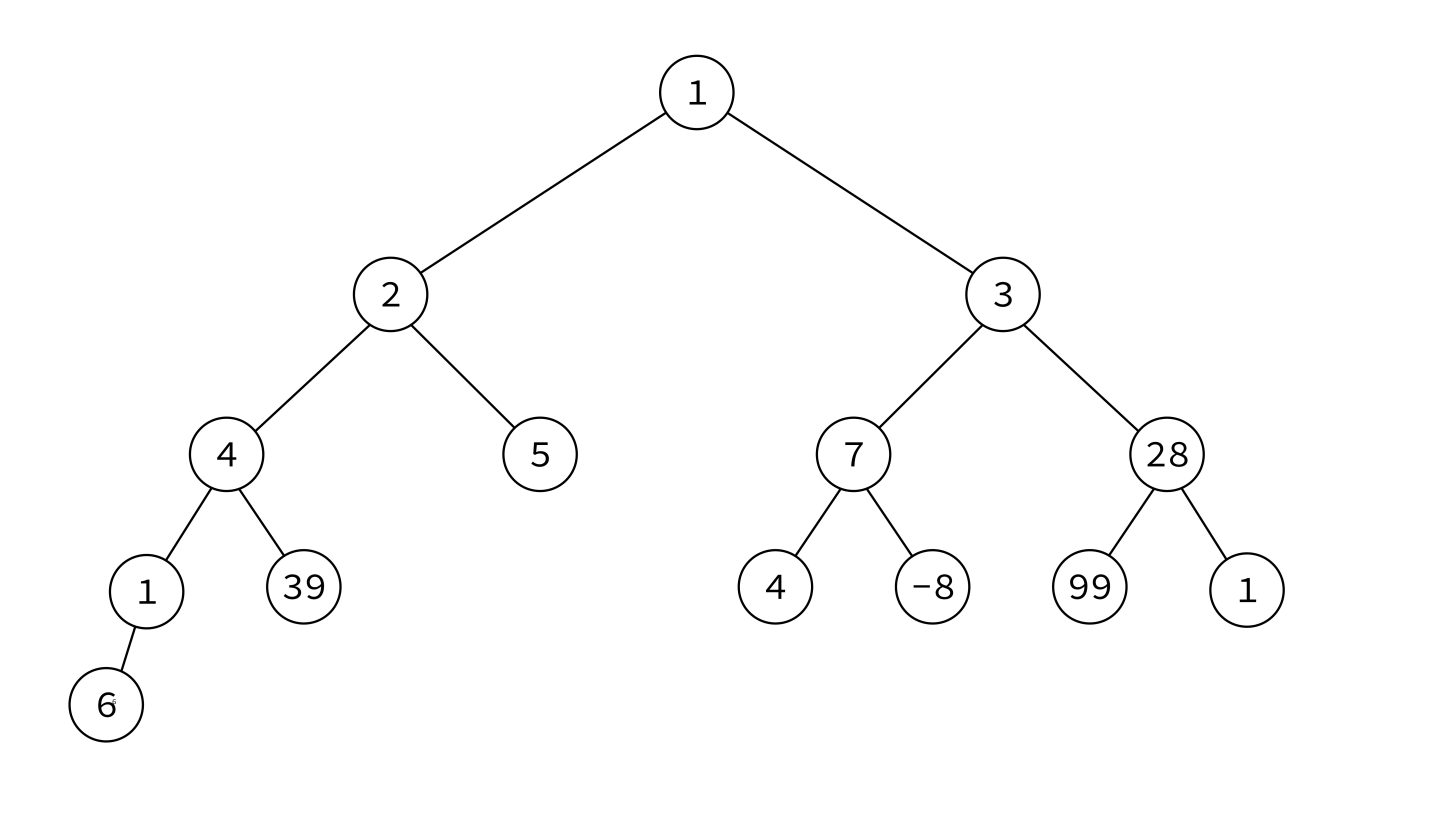
BST
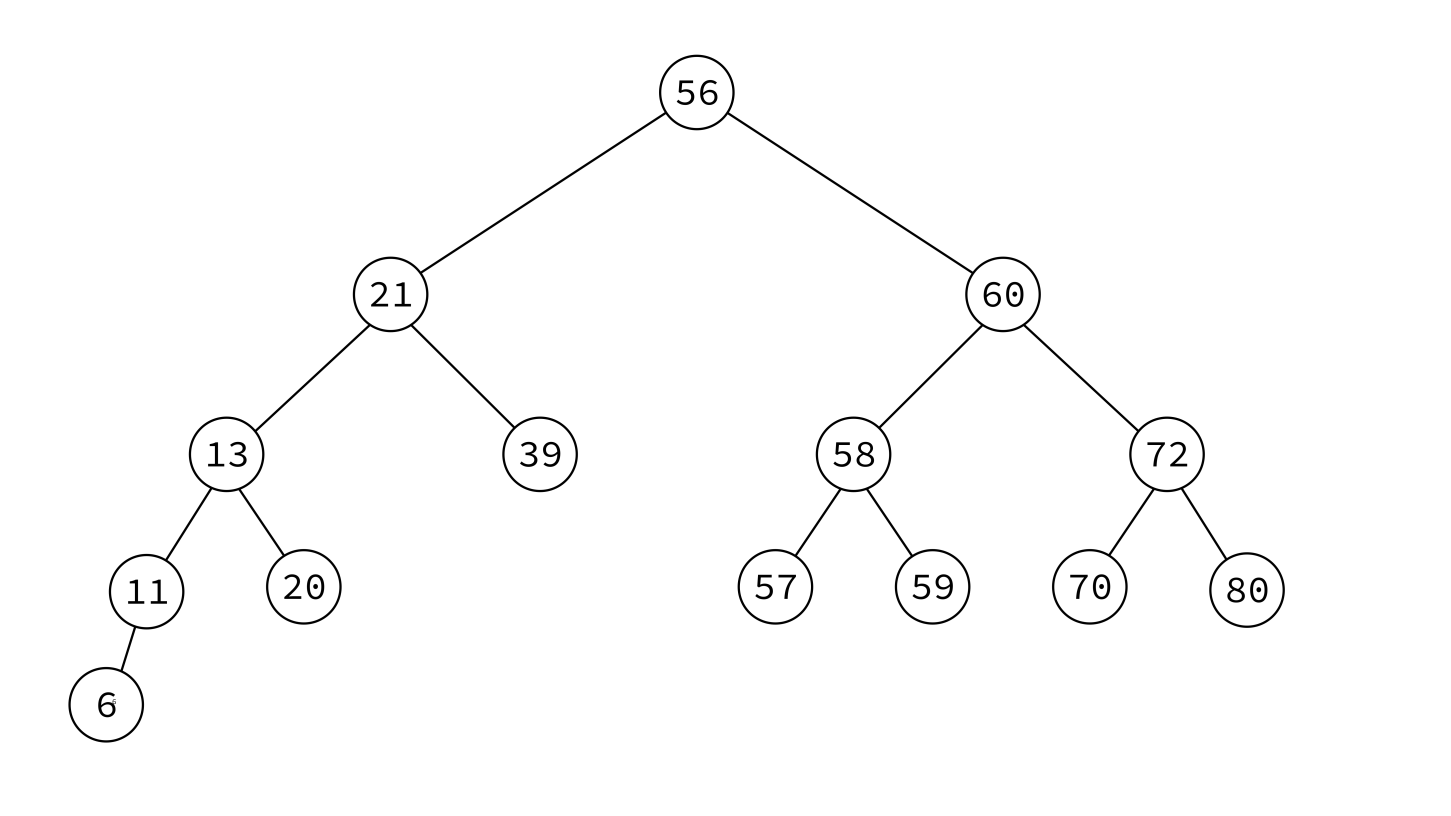
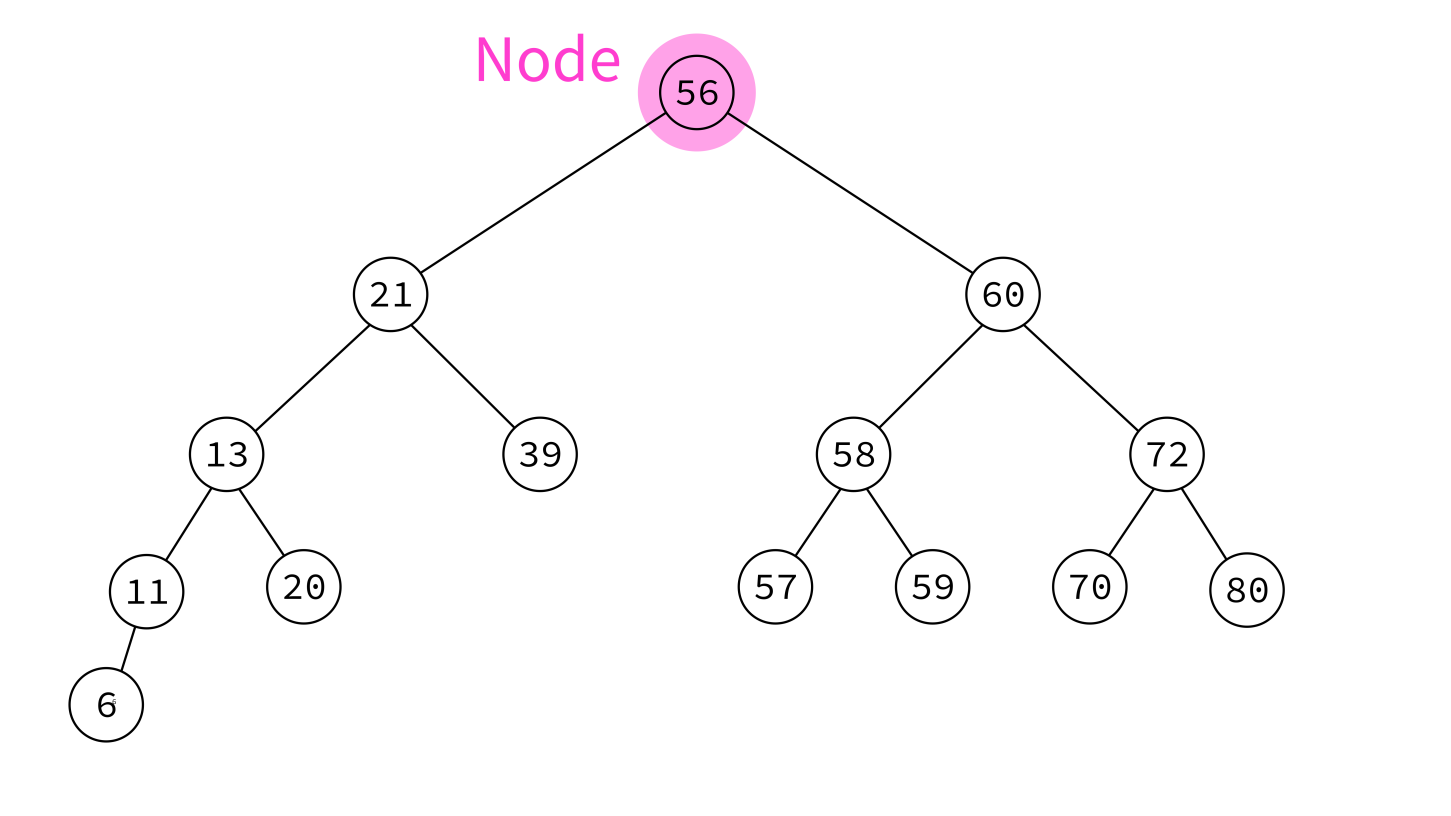
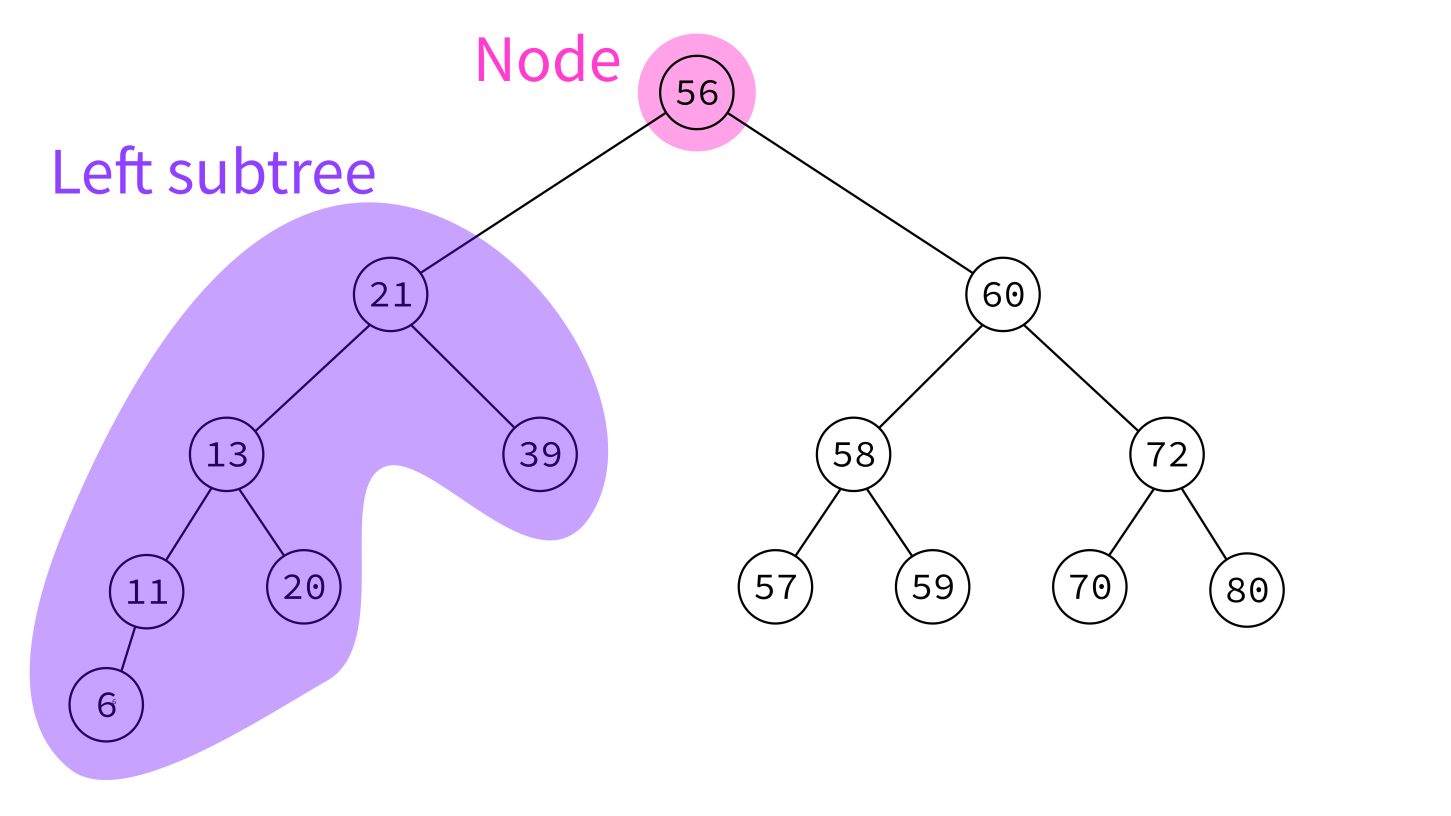
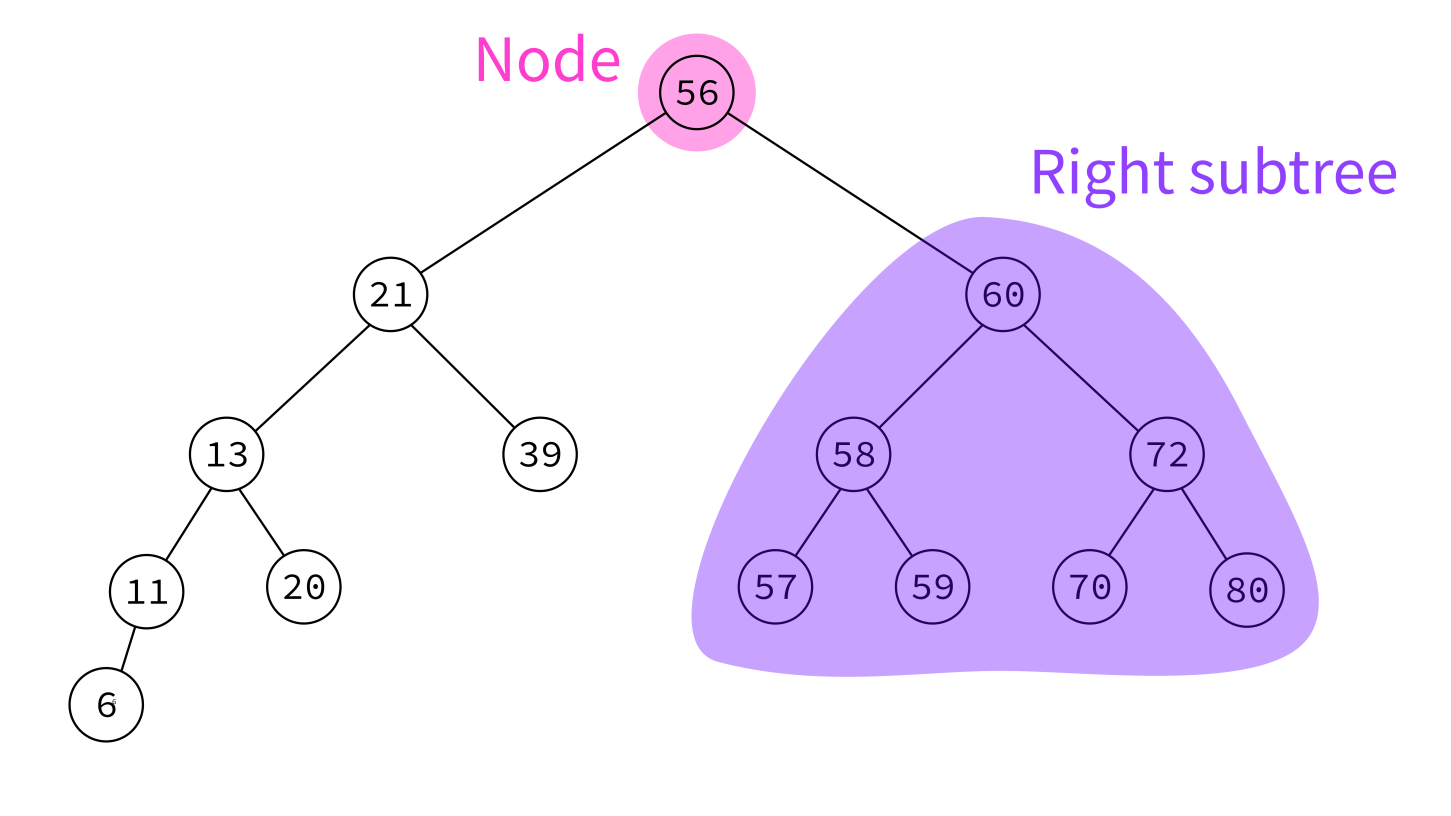
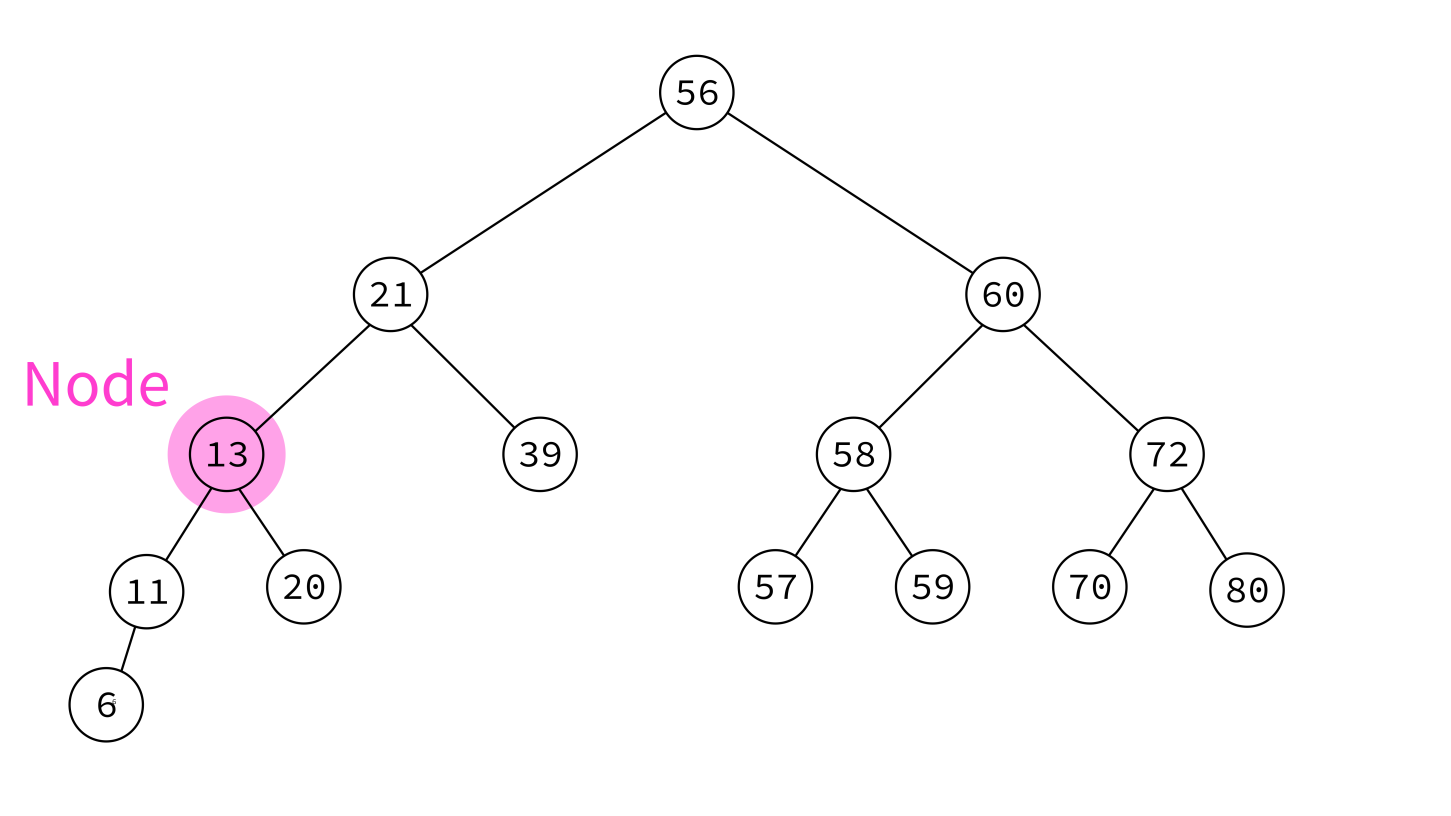

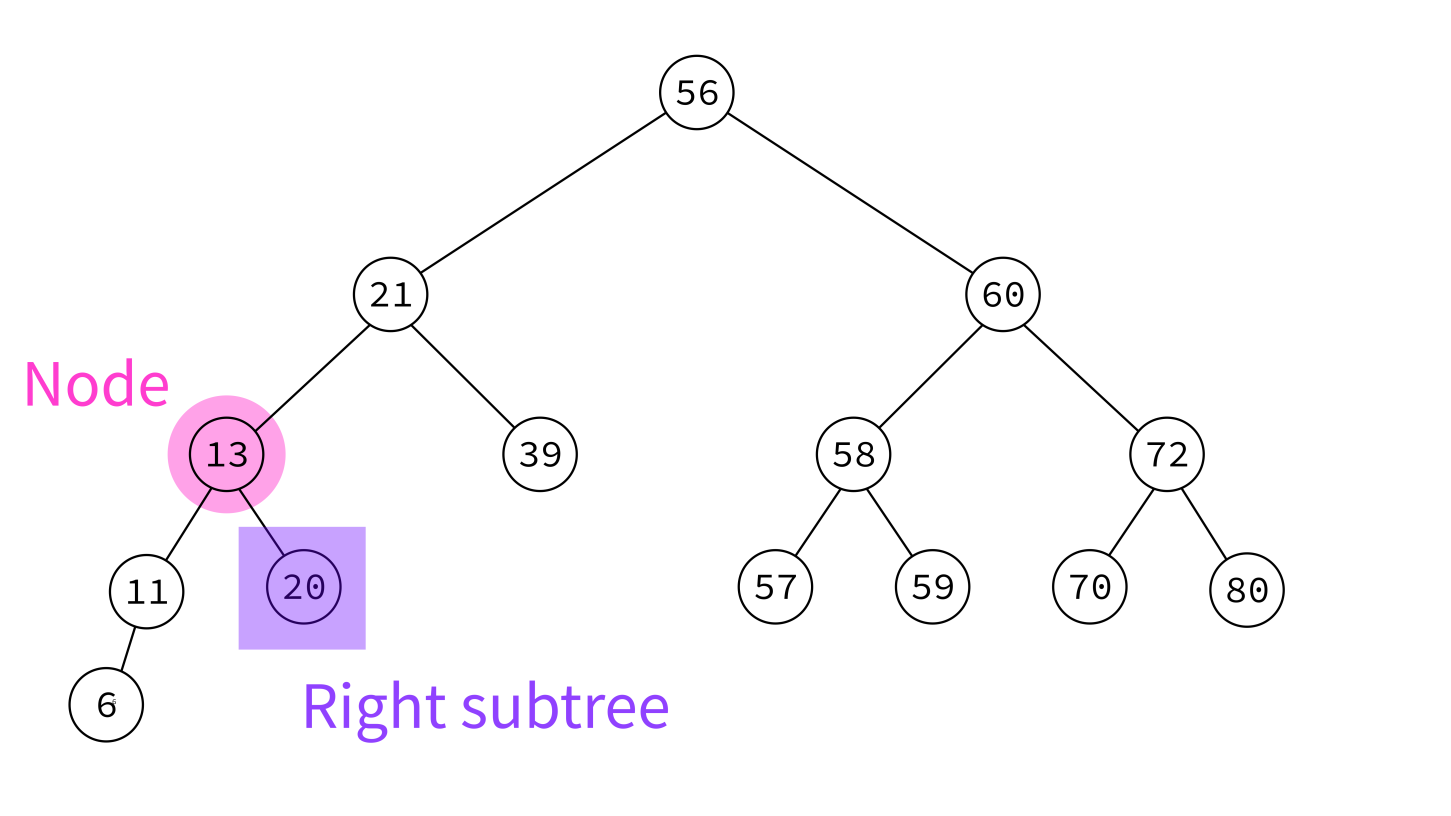
NOT a BST
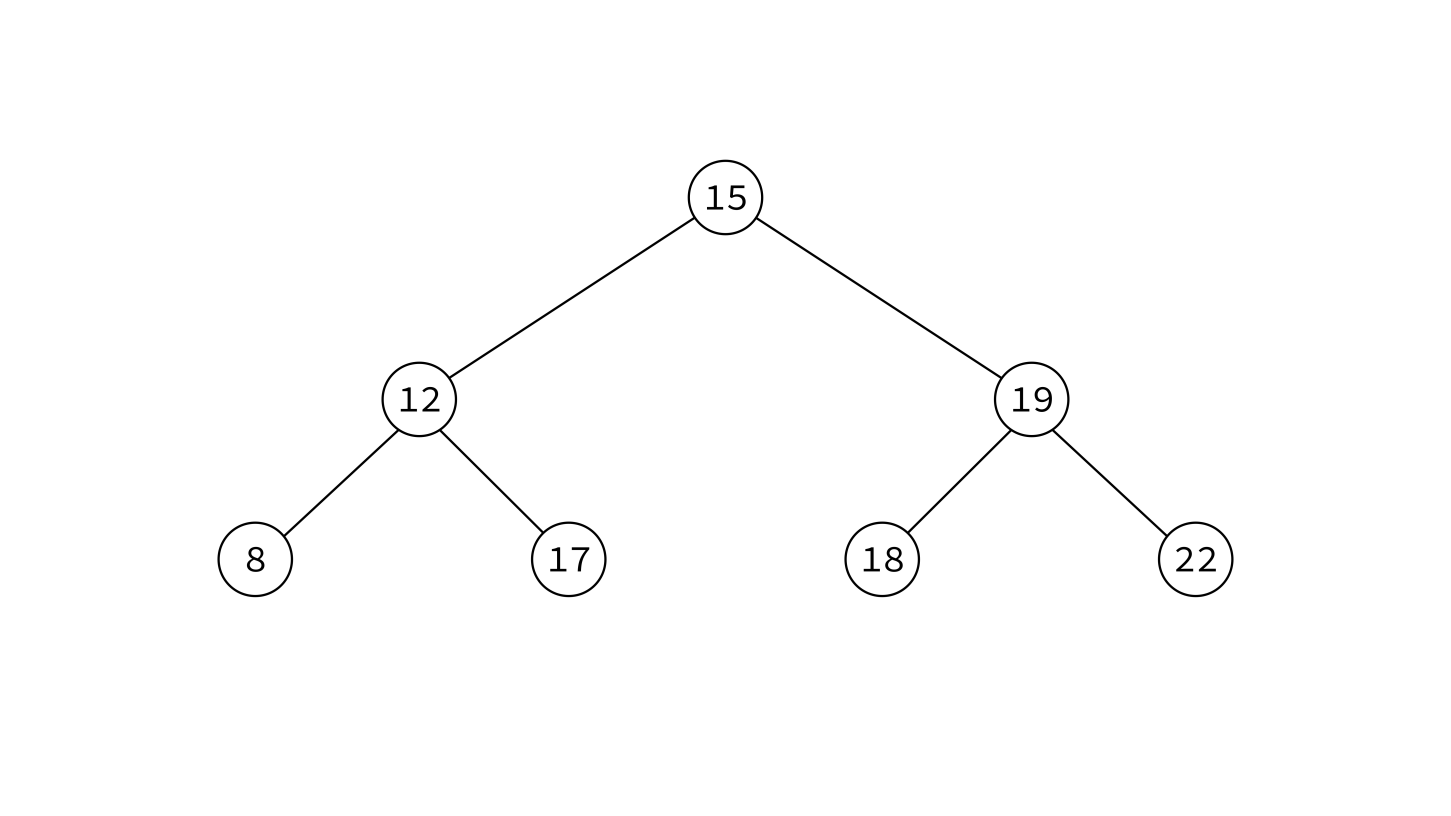
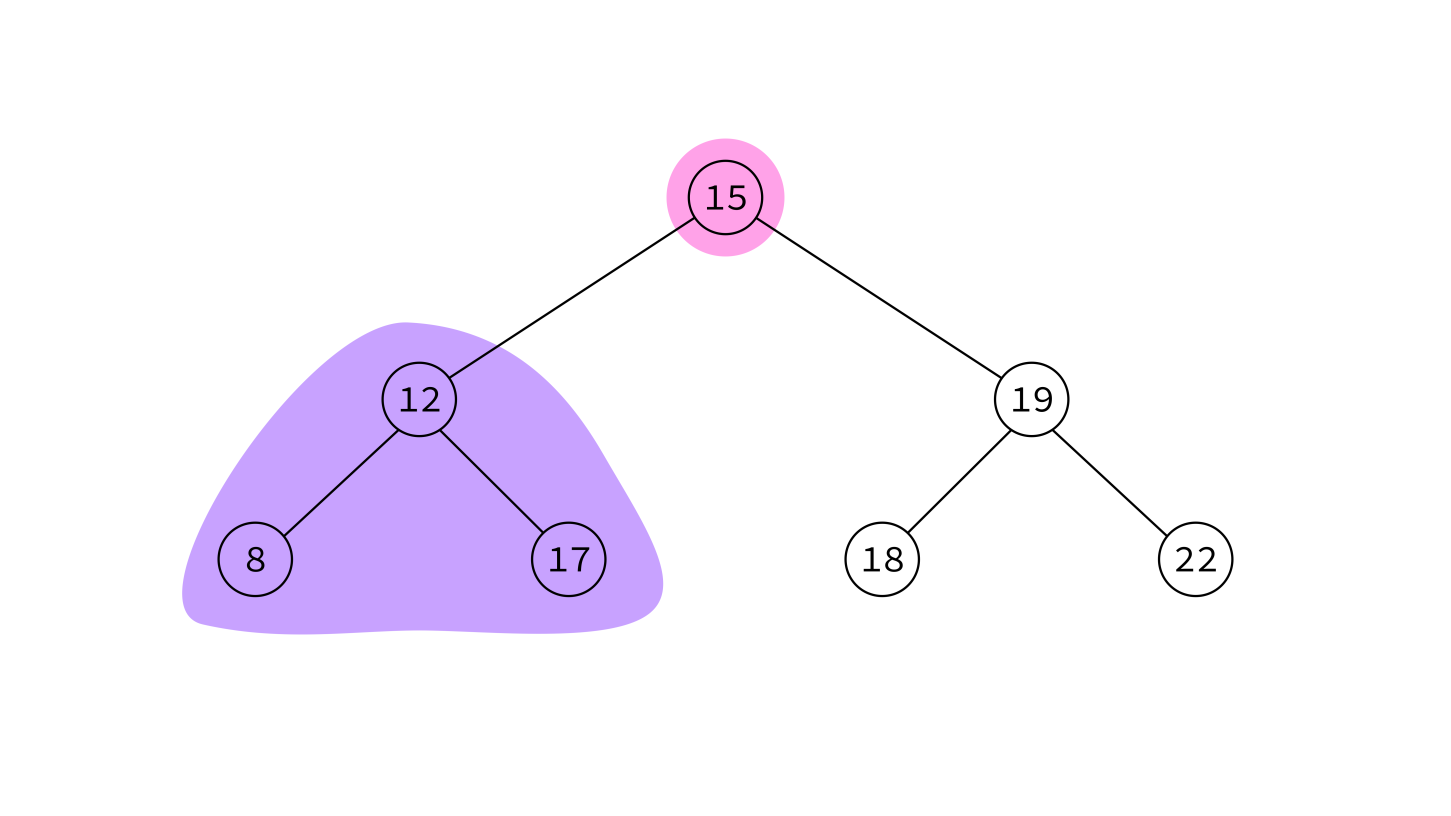
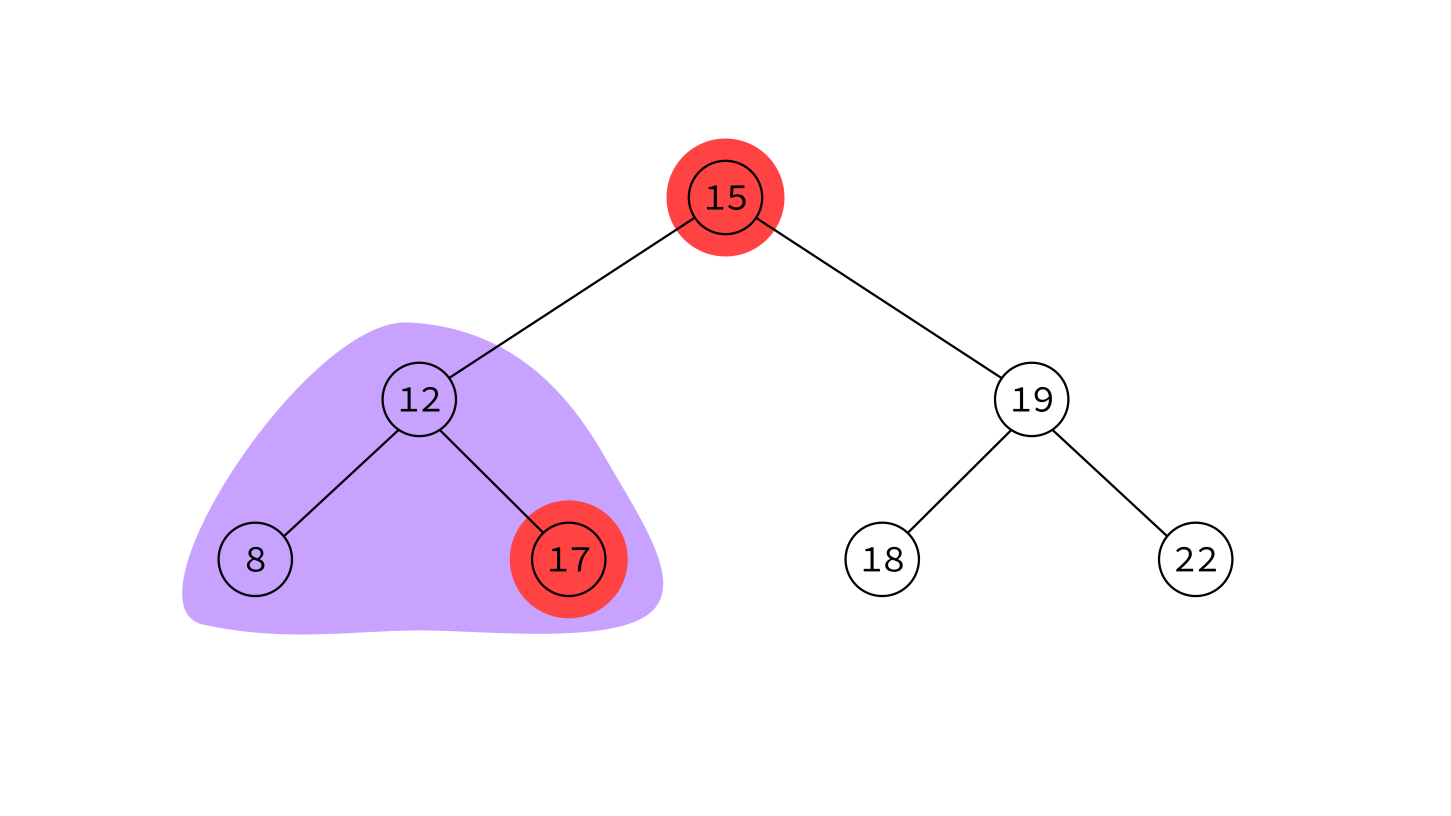
This "just" is a binary tree with keys.
Other tree terms
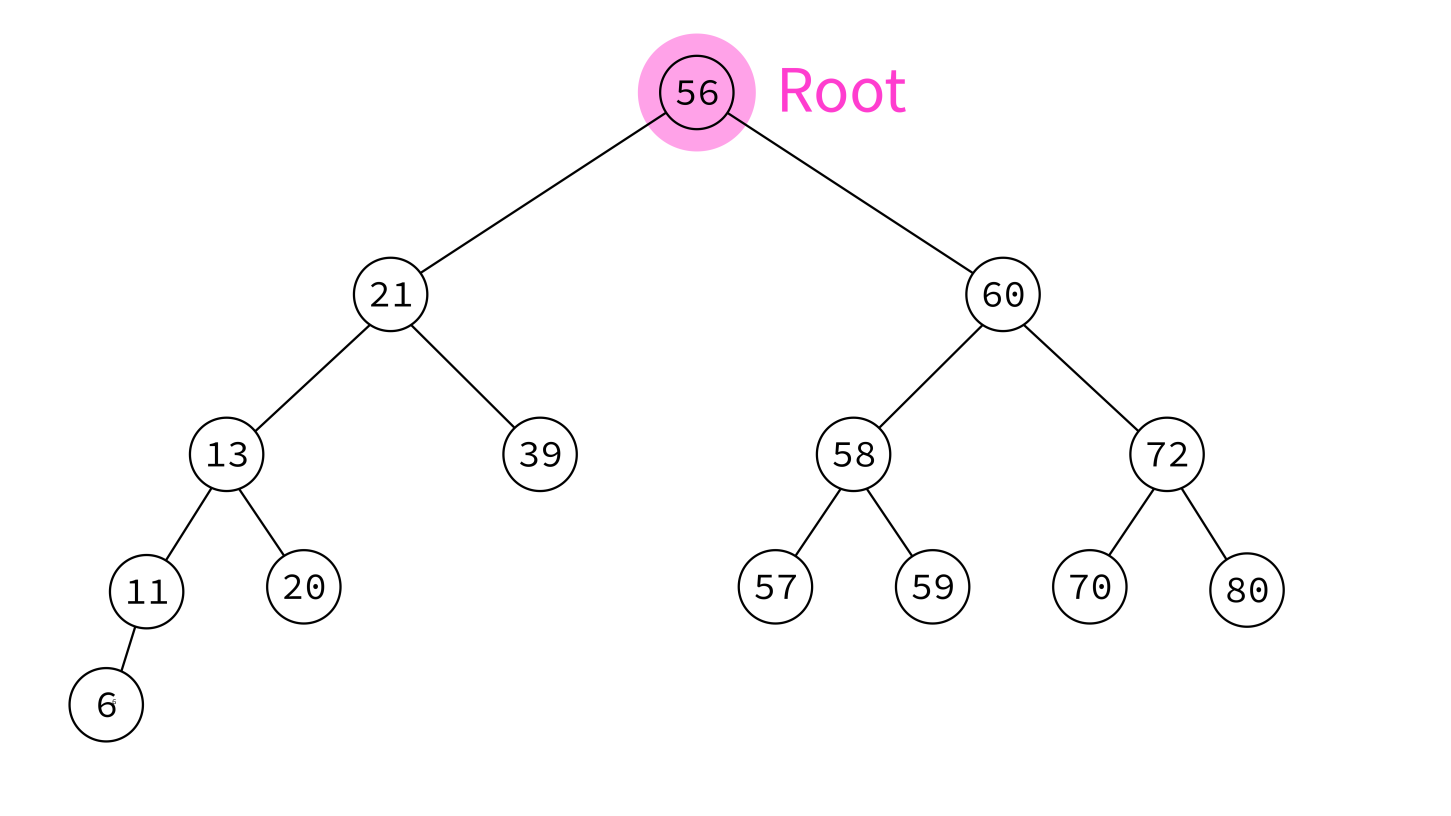

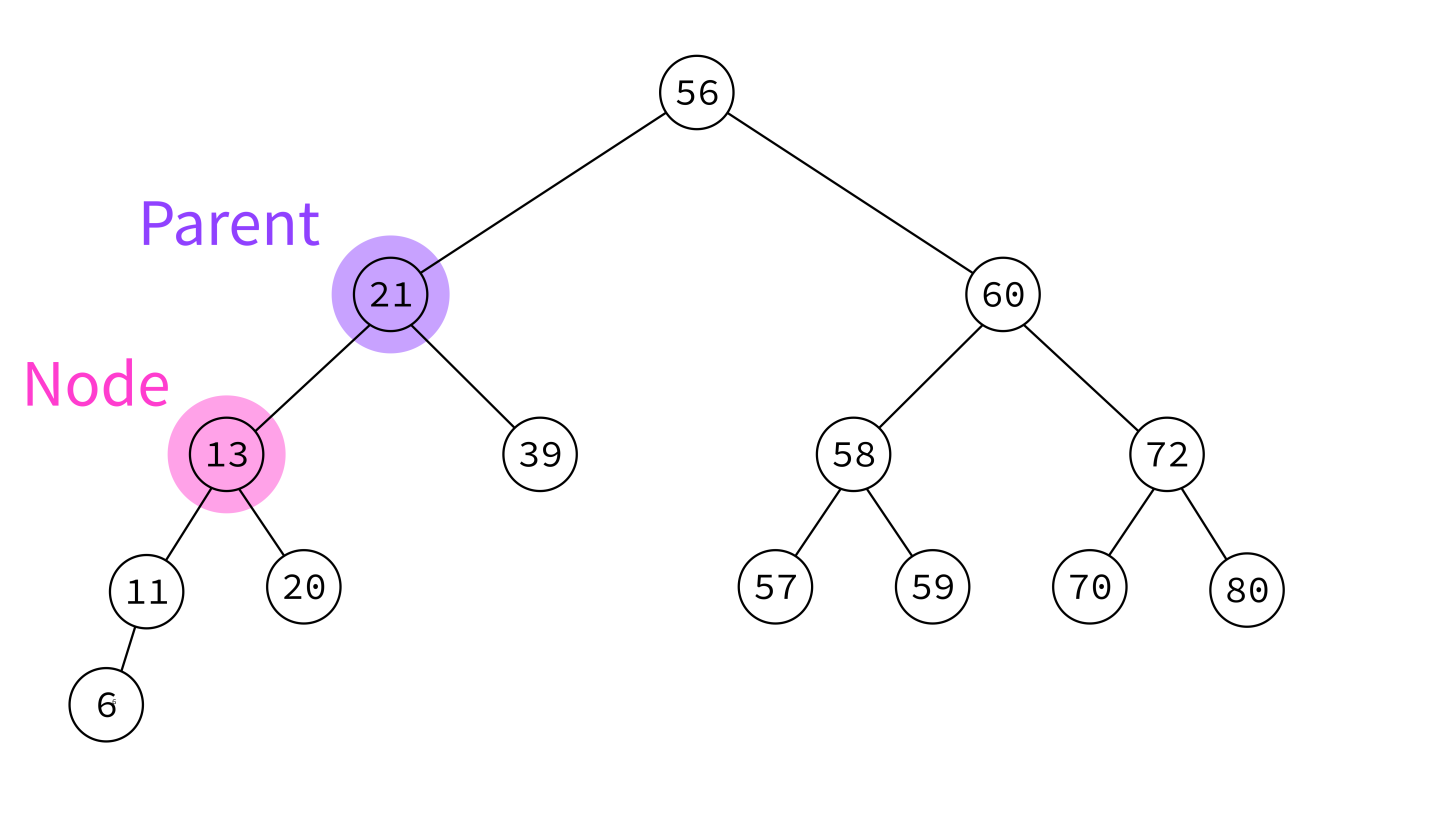
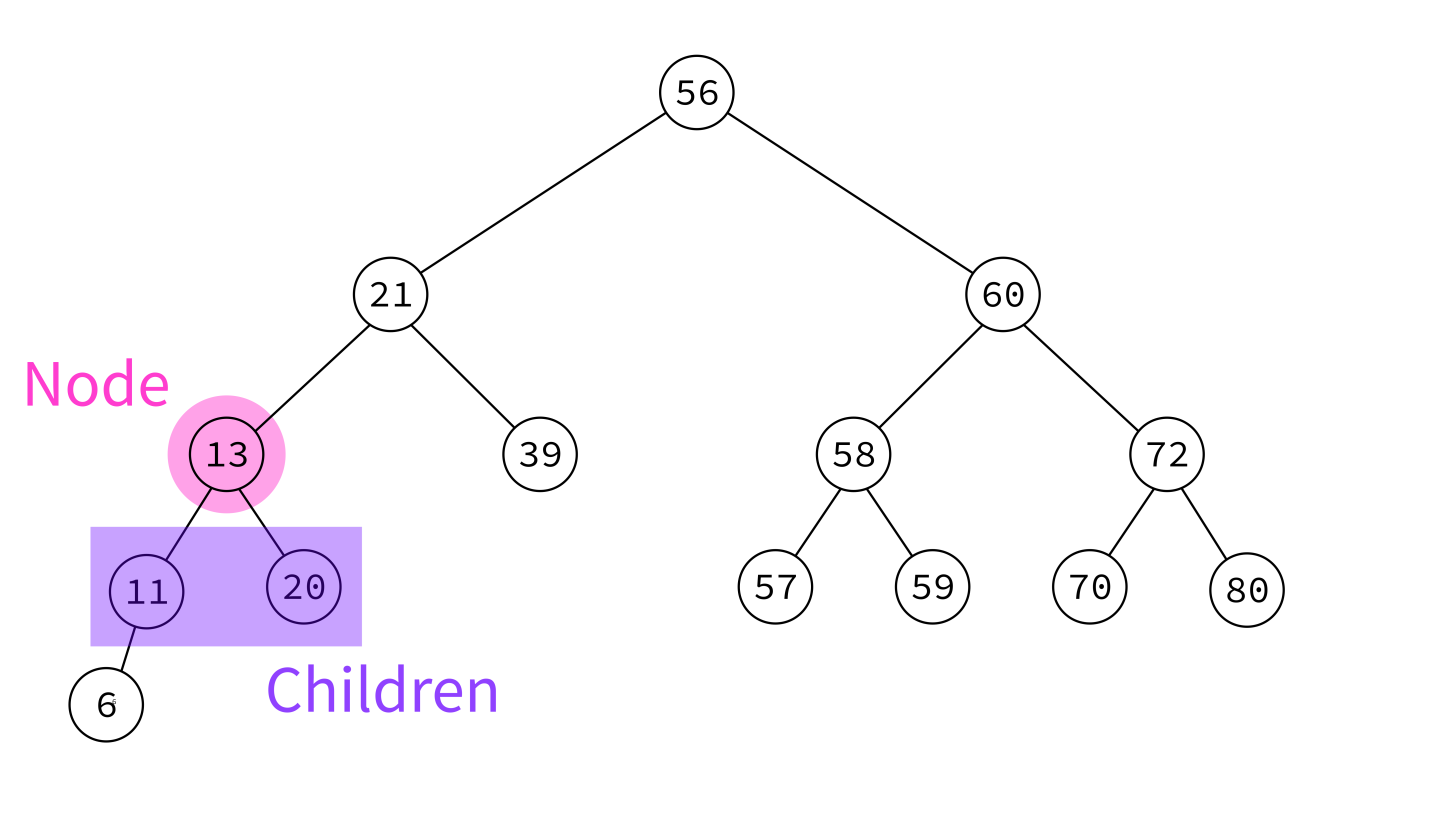
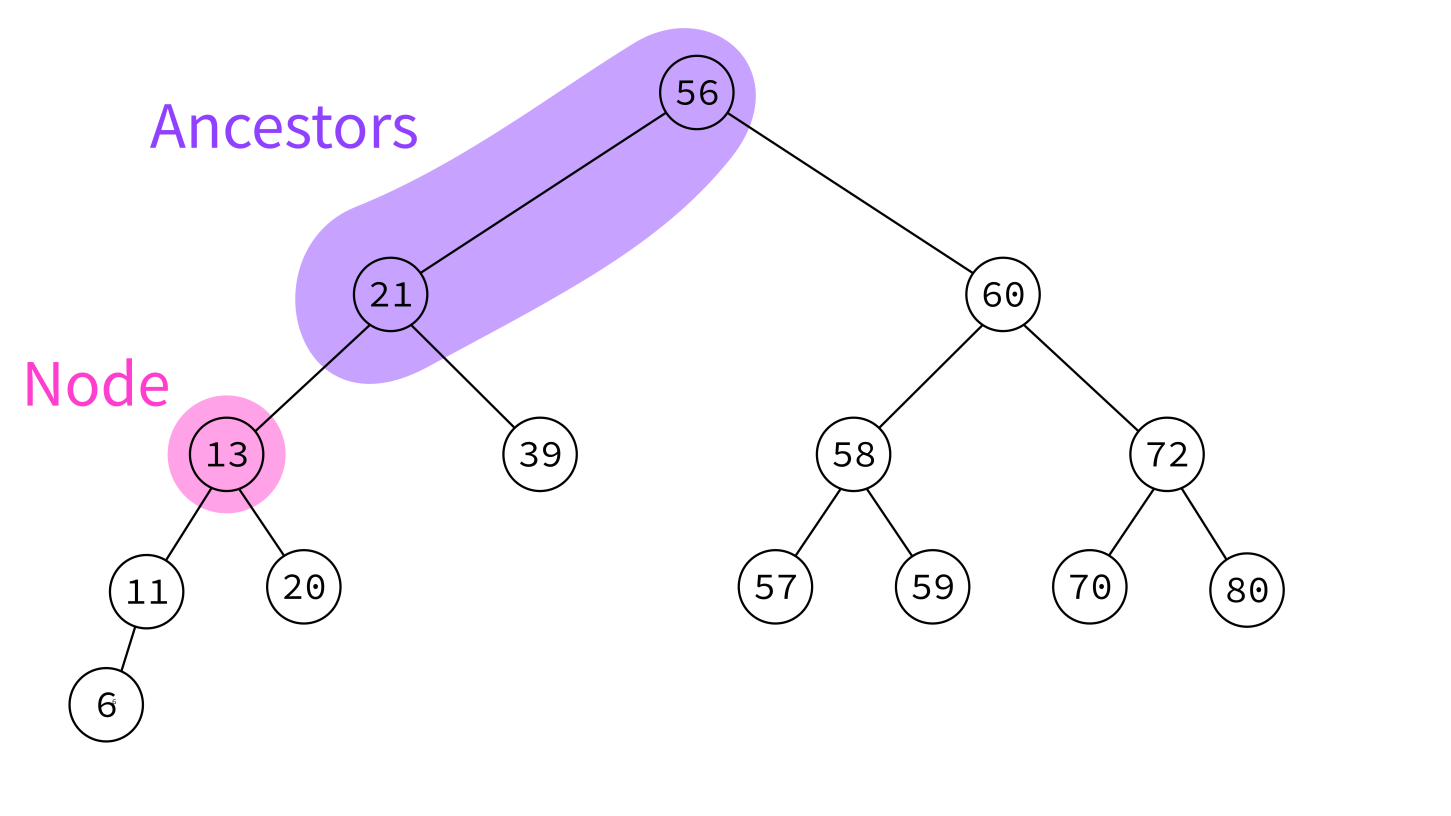

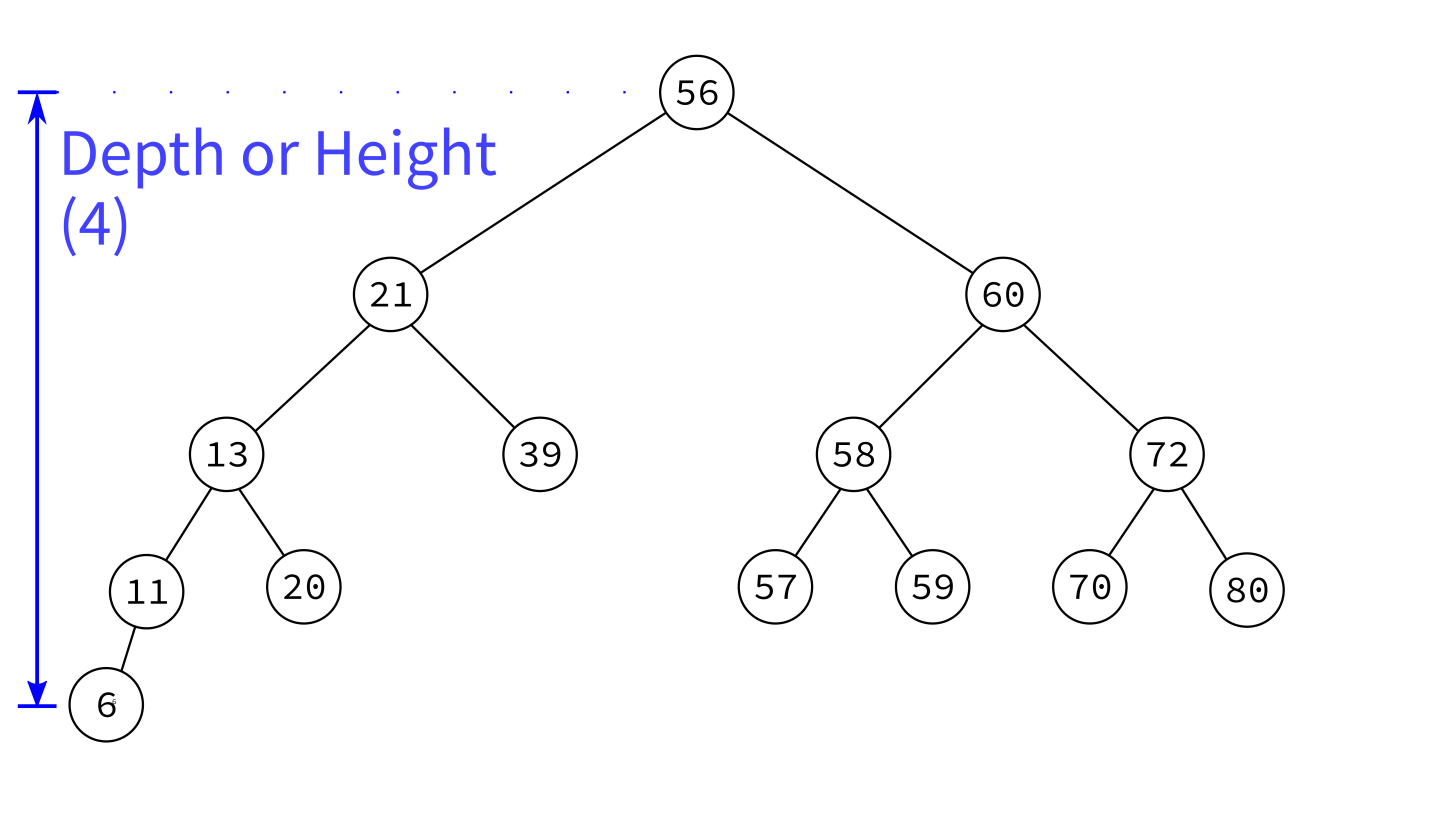
Last time
Node class represents a node of a binary tree (and the entire subtree with that node as root)
Treevis
I provide a module treevis in the sample code repository that can "pretty print" a tree
with the function treeprint(root_node).
Challenge: Read the source of treevis and
figure out how it works!
From tree to BST
Now let's build a subclass of Node to represent a BST.
Desired features:
- Insert nodes (maintaining BST property)
- Search for nodes by key
- Ability to represent an empty tree
Search
Given x, find and return a node with key x. Return None if no
such node exists.
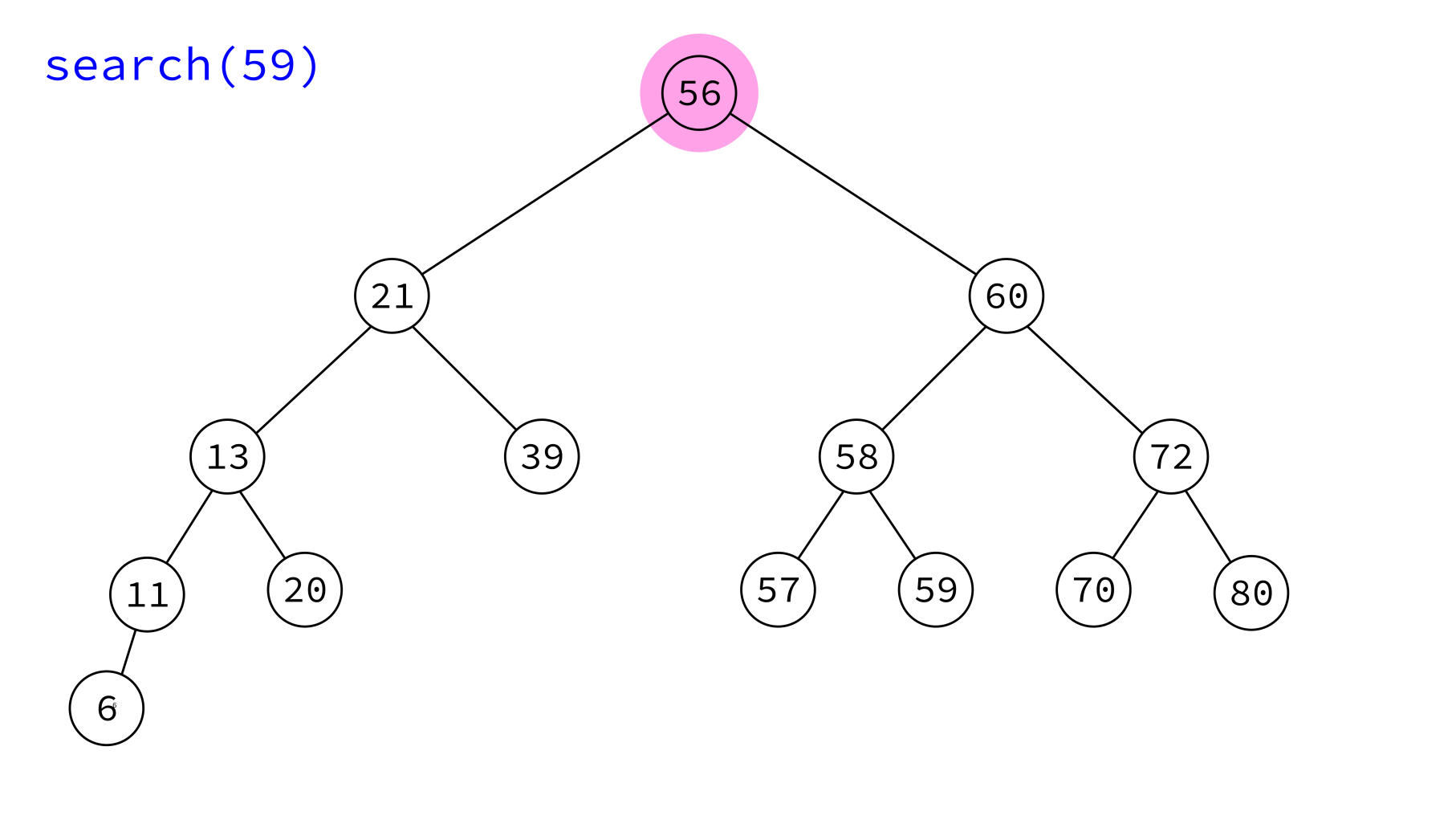
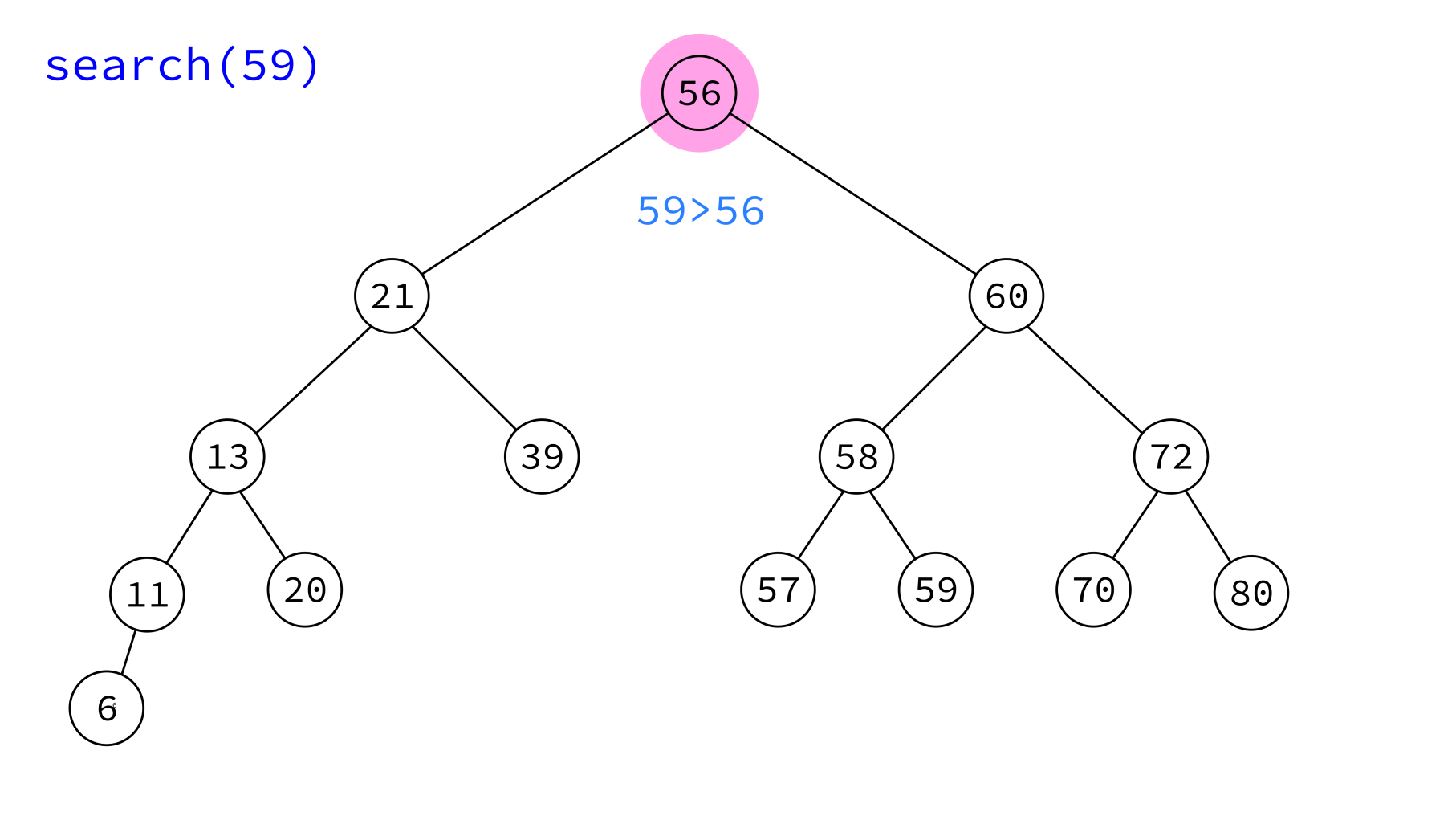
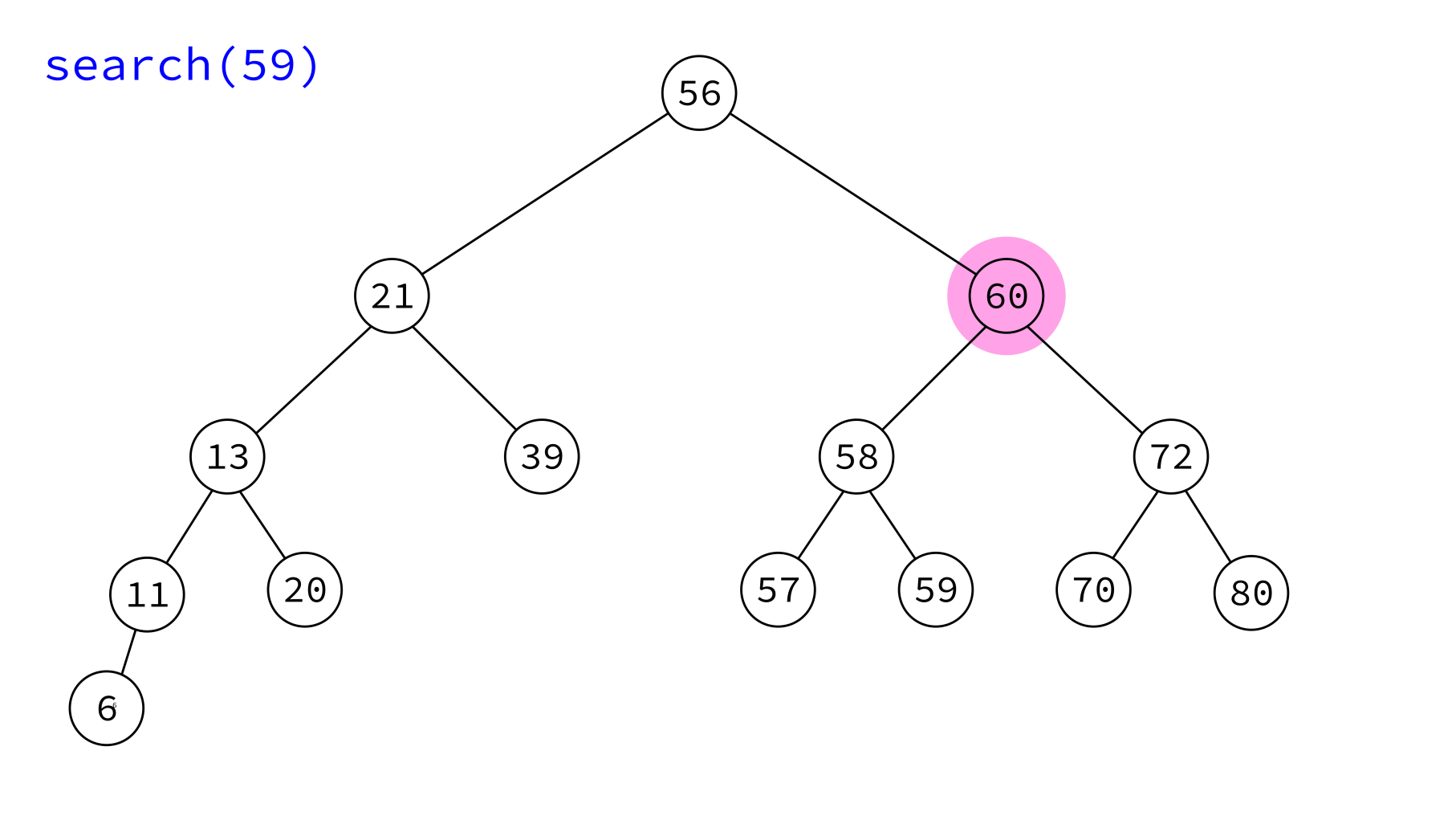
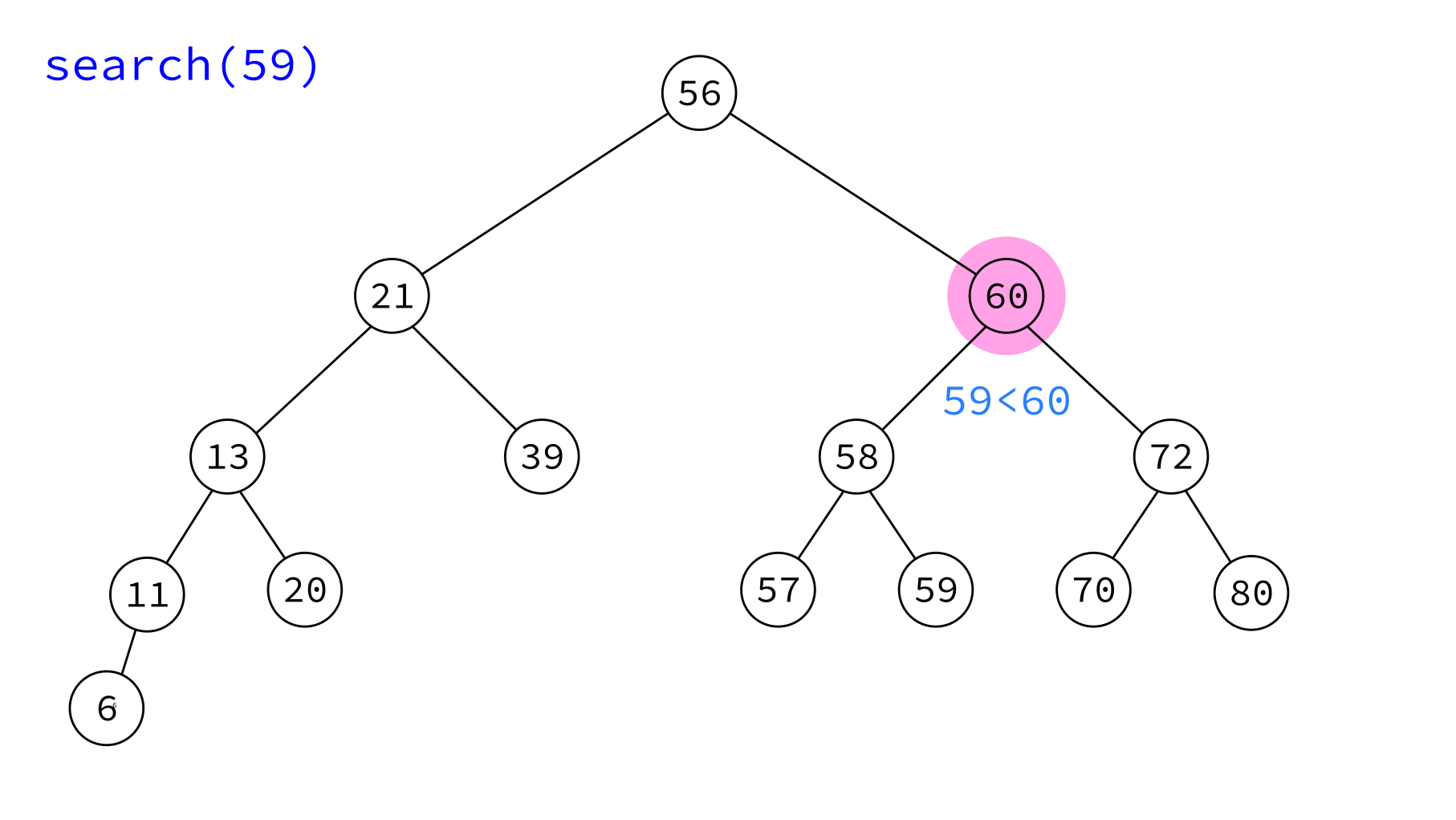
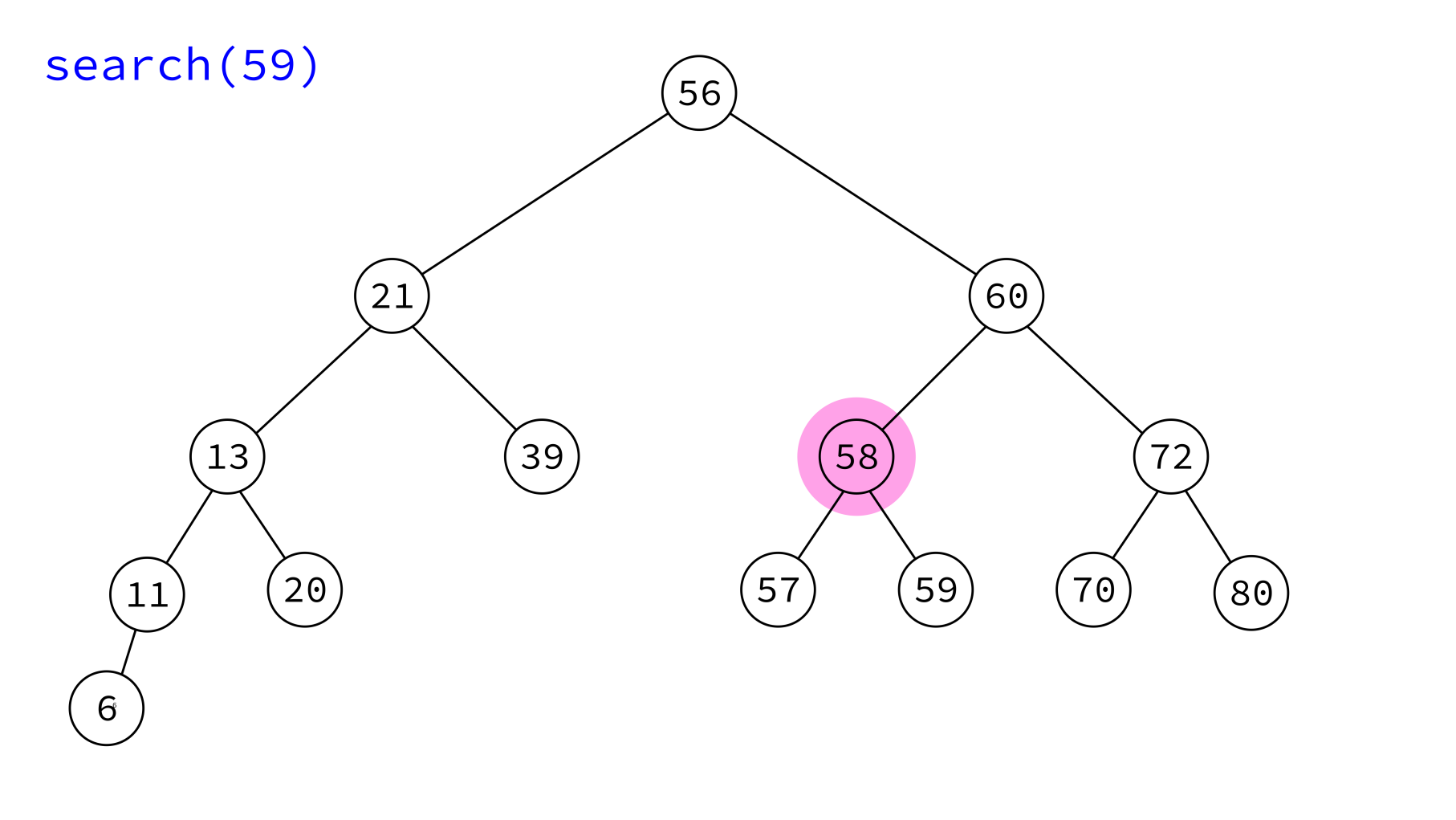
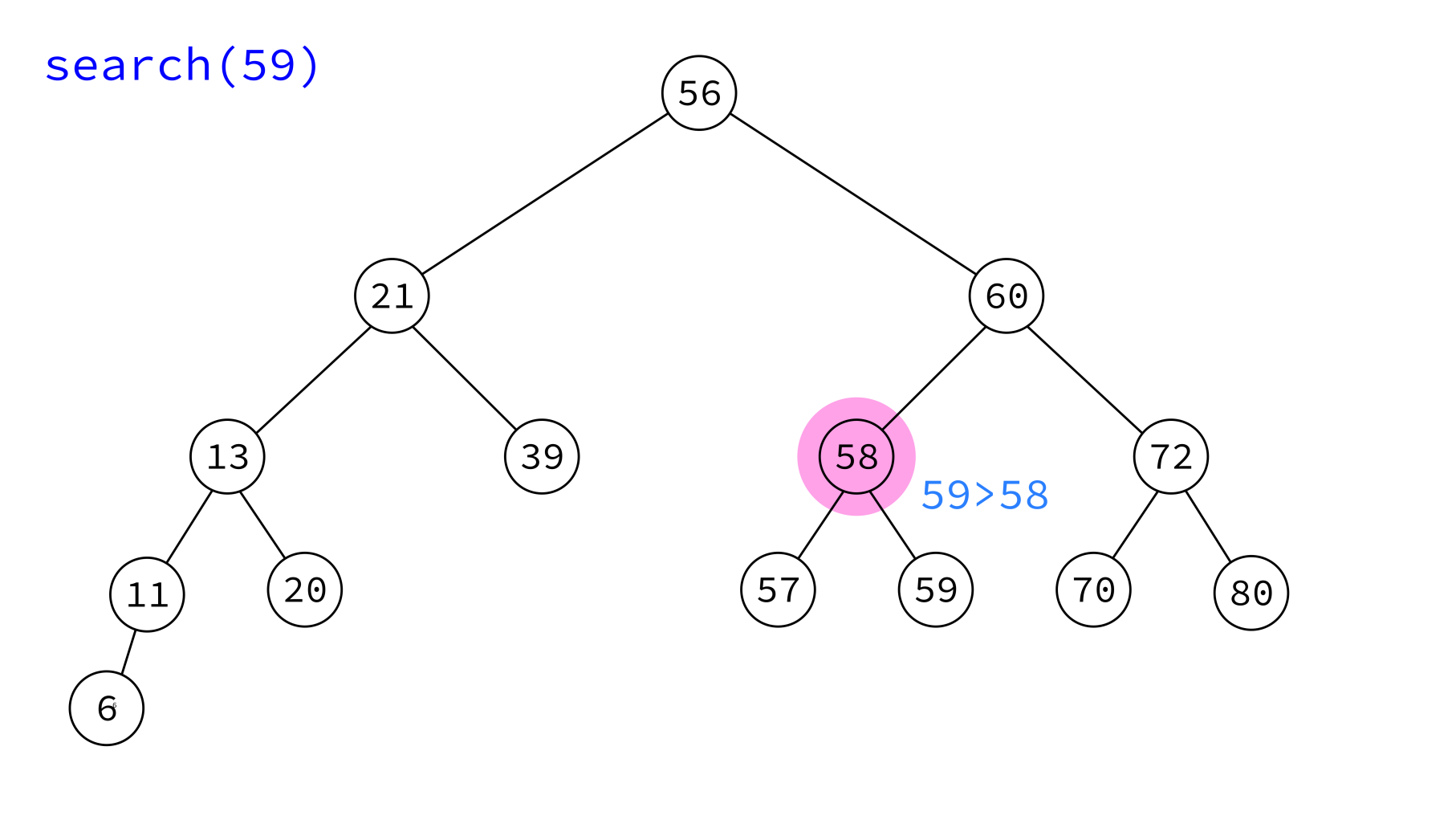
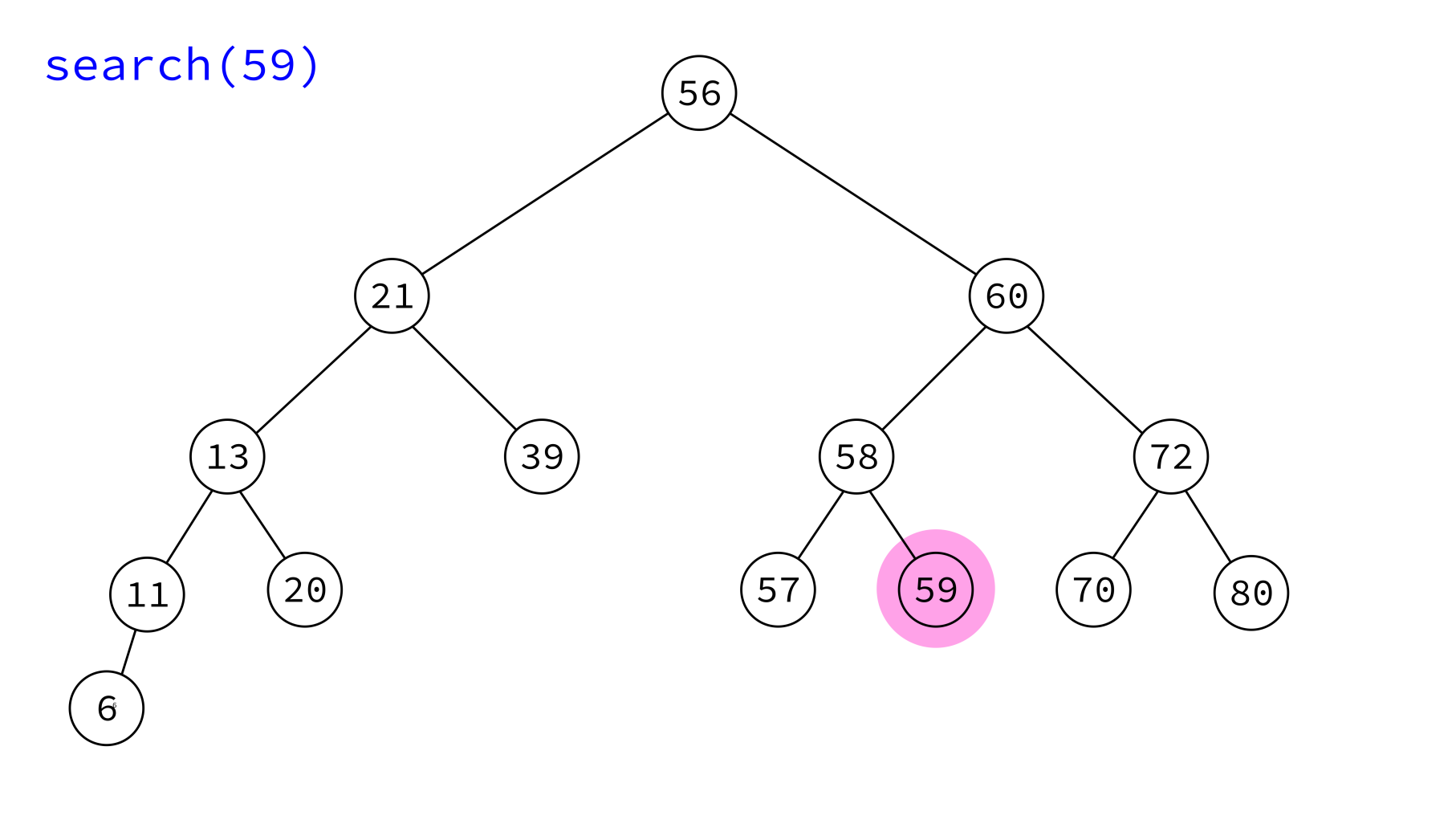
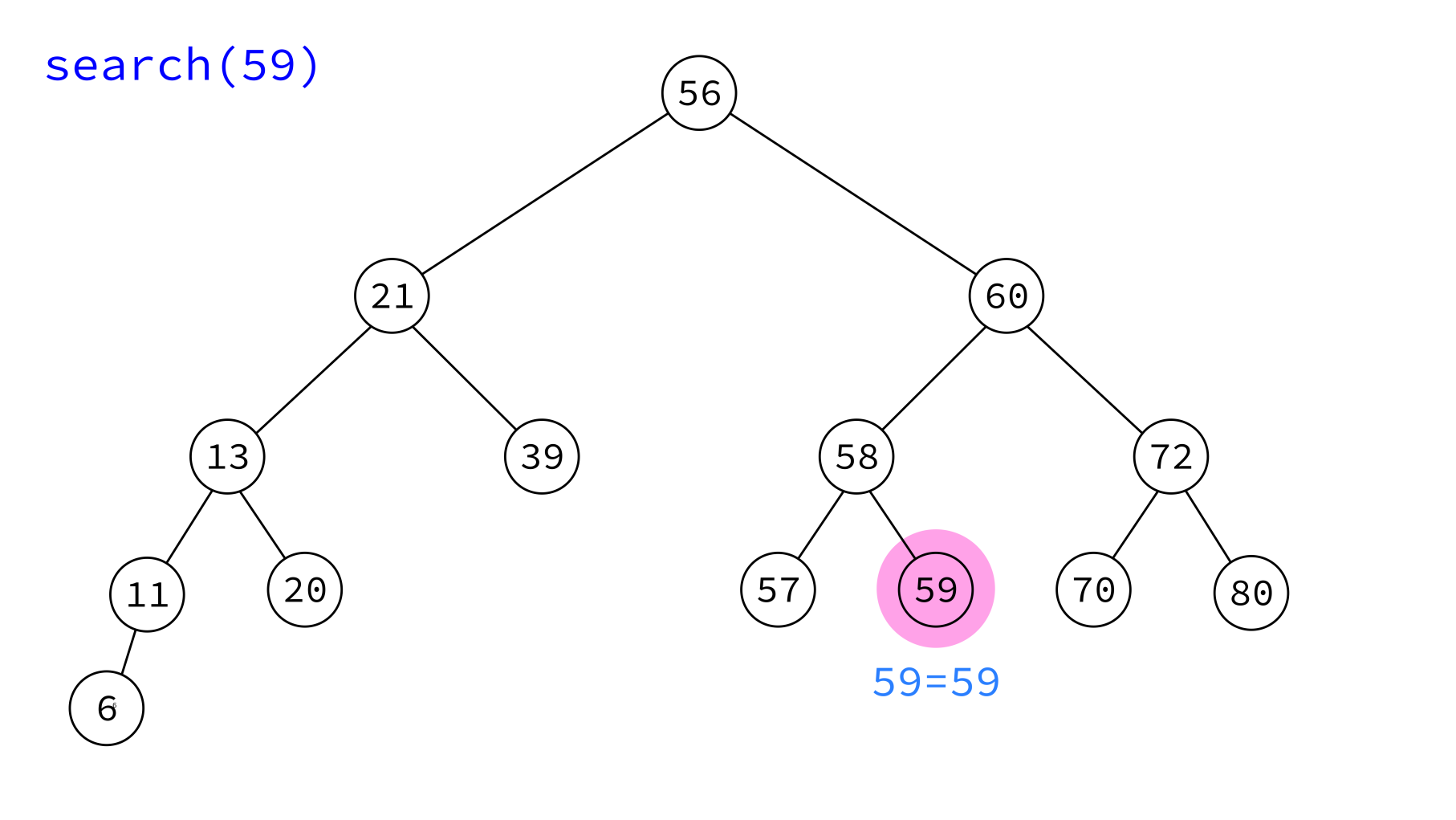
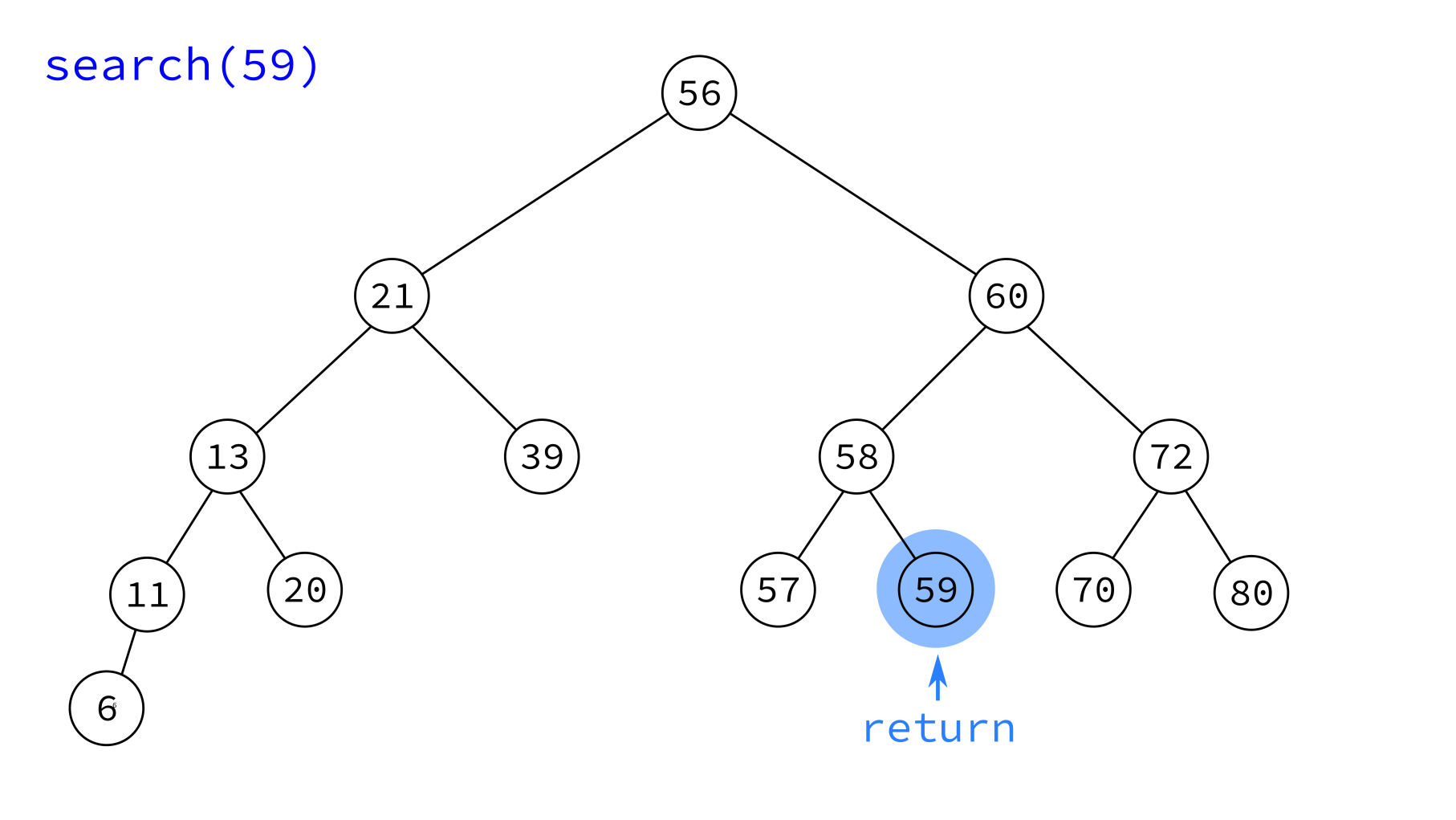
Insert
Given a key, add a node to the tree with that key, maintaining the BST property.

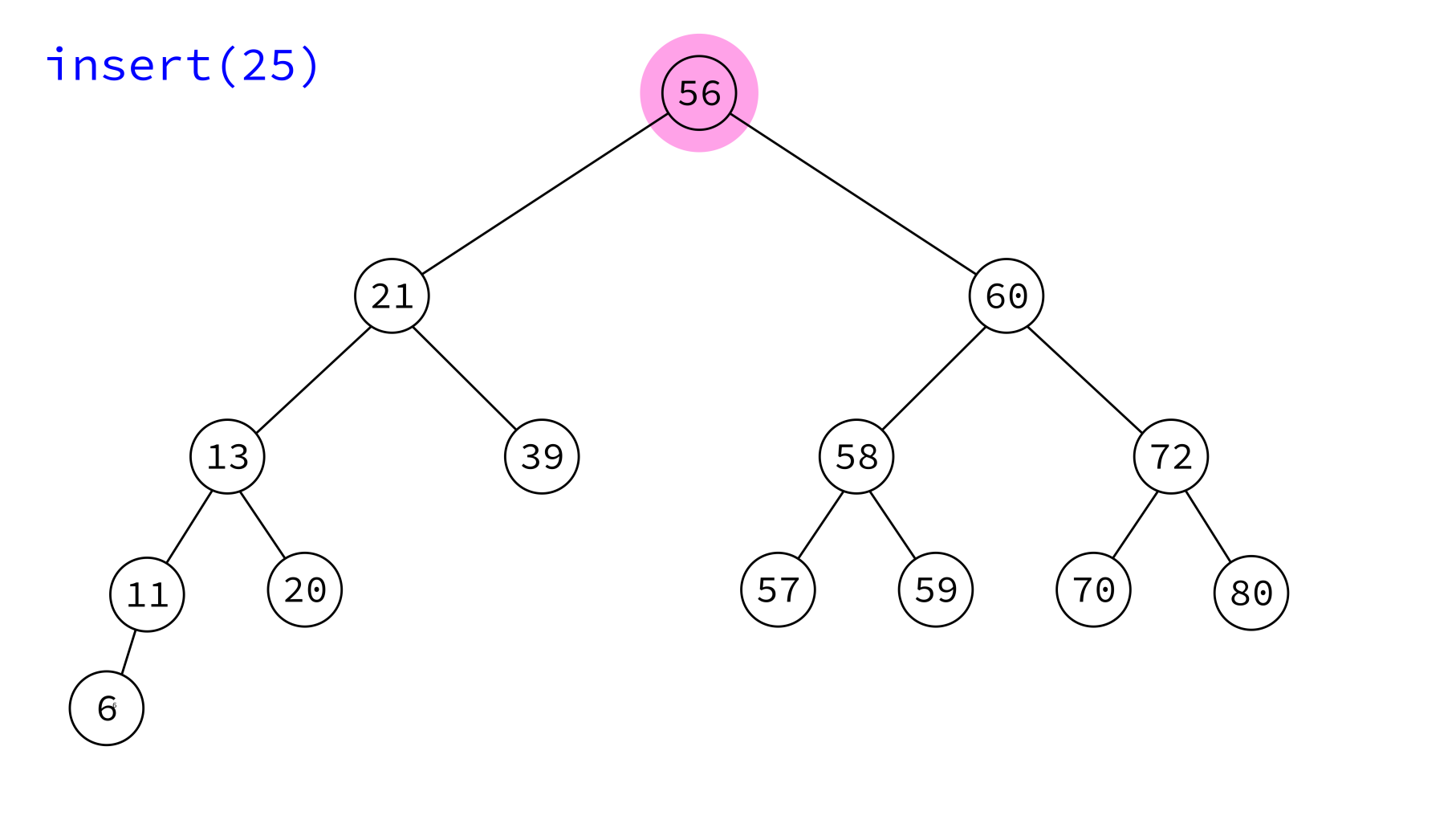
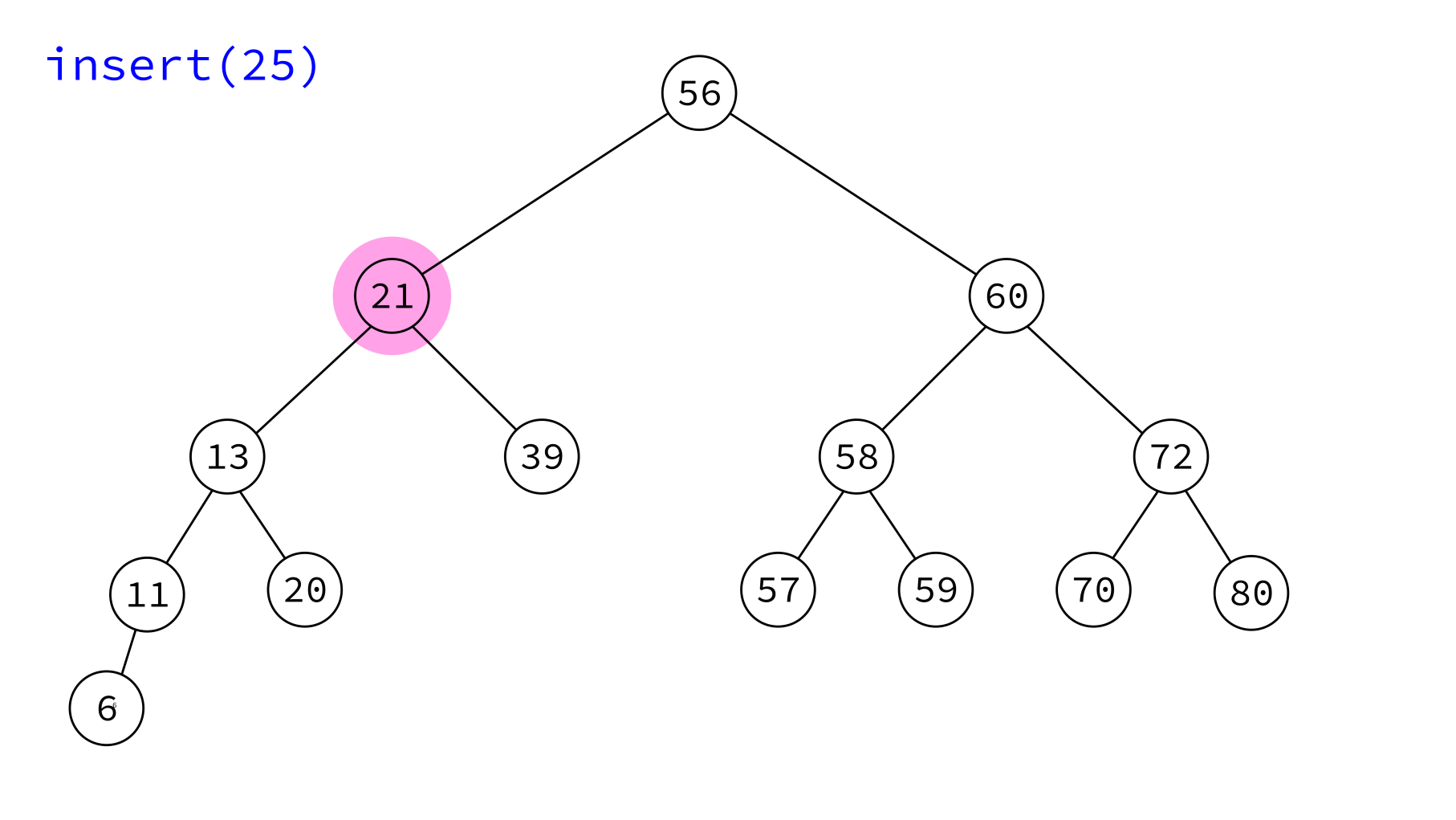
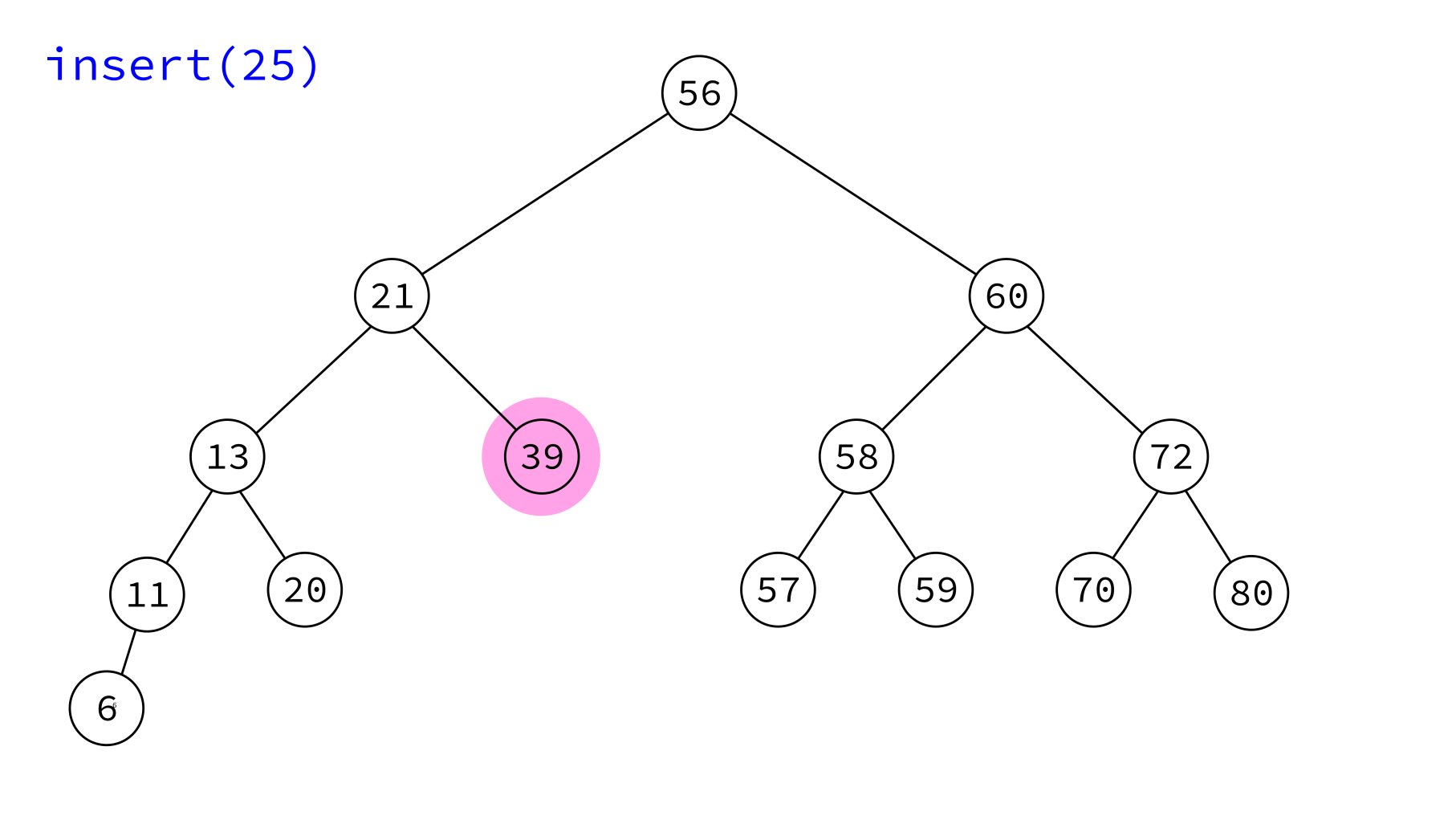

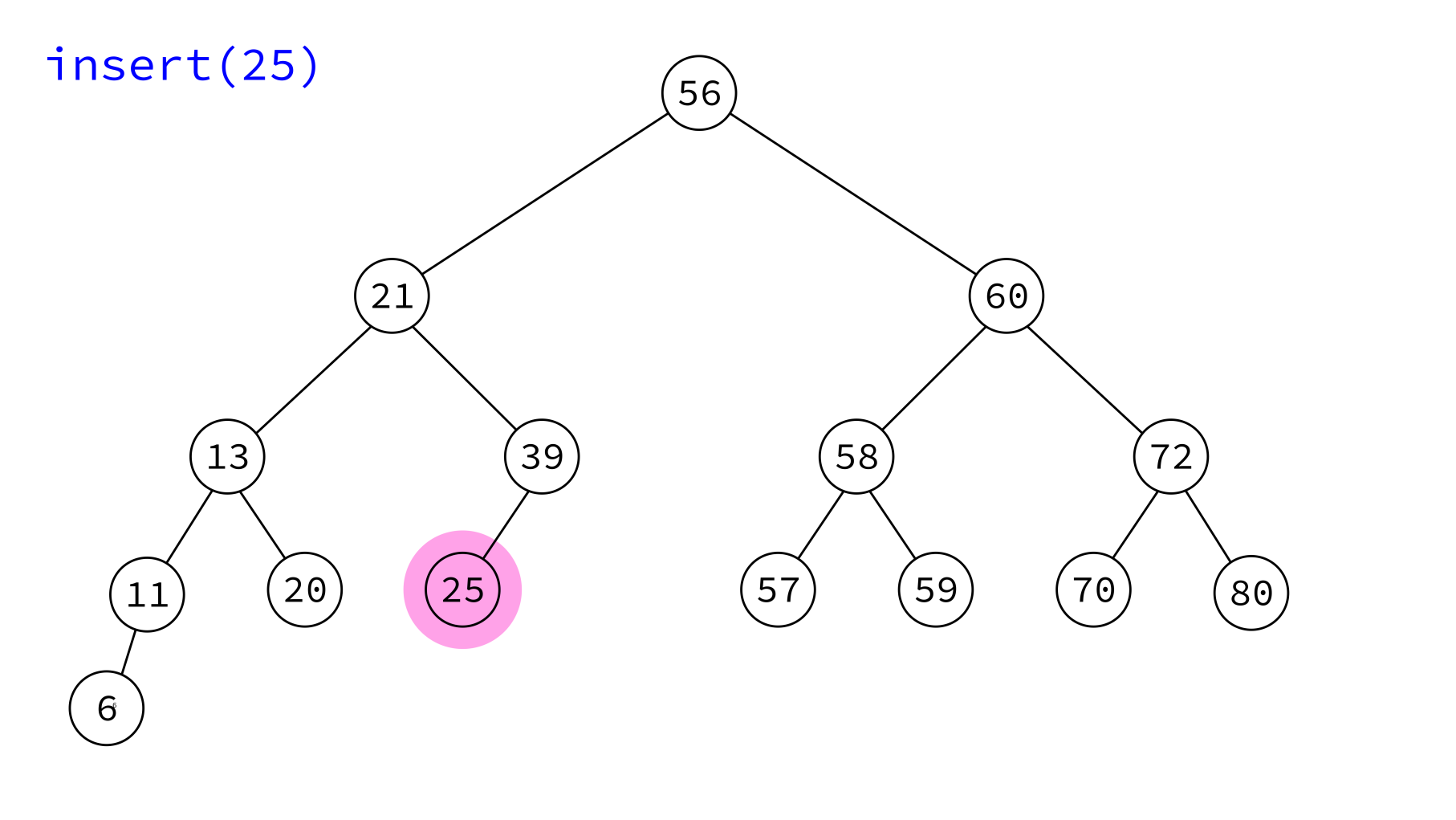
IntegerSet
Let's use this to build a class to store a collection of integers that supports fast insertion and membership testing.
Implementation Hiding
IntegerSet has many possible implementations (e.g. a list, a tree, ...), and a user of
the class doesn't need to know about which one it uses.
References
-
In optional course texts:
- Problem Solving with Algorithms and Data Structures using Python by Miller and Ranum, discusses binary trees in Chapter 7.
-
Elsewhere:
- Cormen, Leiserson, Rivest, and Stein discusses graph theory and trees in Appendices B.4 and B.5, and binary search trees in Chapter 12.
Revision history
- 2023-02-20 Finalization of the 2023 lecture this was based on
- 2024-02-12 Initial publication